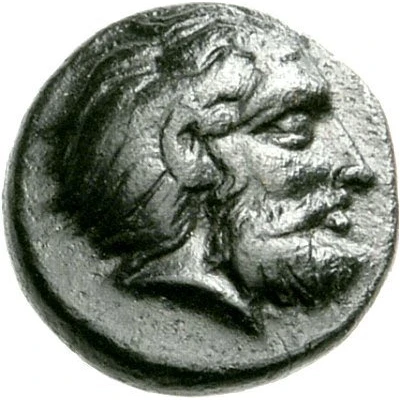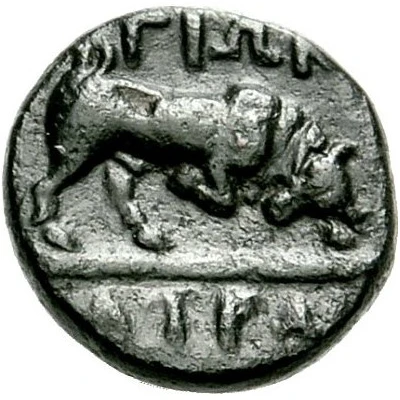


© Nomos AG
Chalkon 360 BC - 340 BC
| Bronze | 1.35 g | 10.0 mm |
| Issuer | Atrax (Thessaly) |
|---|---|
| Type | Standard circulation coin |
| Years | 360 BC - 340 BC |
| Value | Chalkon (1⁄48) |
| Currency | Drachm |
| Composition | Bronze |
| Weight | 1.35 g |
| Diameter | 10.0 mm |
| Shape | Round (irregular) |
| Technique | Hammered |
| Demonetized | Yes |
| Updated | 2024-10-10 |
| Numista | N#170912 |
|---|---|
| Rarity index | 97% |
Reverse
Bull, with head lowered, butting to right
Script: Greek
Lettering:
ΓΙΩΝ
ΑΤΡΑ
Interesting fact
The Chalkon coin was used in ancient Thessaly, a region in central Greece, and features a unique design. On one side, it depicts a horseman riding a horse, while on the other side, it shows a shield with the letter "Α" (alpha) inside. This coin was used during the reign of King Alexander I of Epirus, who ruled from 360 BC to 340 BC. Despite being made of bronze, the Chalkon coin was considered valuable and was widely used in trade and commerce during that time.